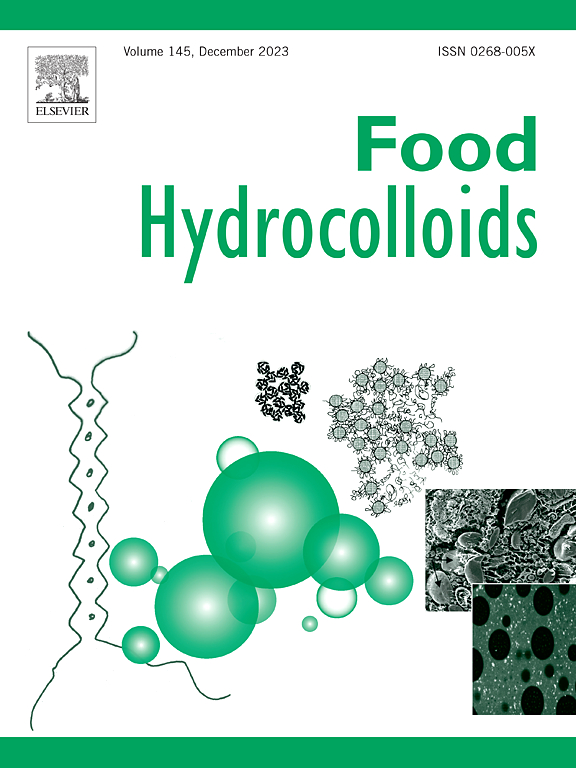Regulating association strength between SPI and pectin via sodium alginate: Ternary composite construction and potential-use assessment
IF 11
1区 农林科学
Q1 CHEMISTRY, APPLIED
引用次数: 0
Abstract
In this study, sodium alginate (SA) was introduced to modulate the interactions between soy protein isolate (SPI) and pectin (PEC). The particle characteristics and the effects of different SA/PEC ratios (0:10, 3:7, 5:5, 7:3, and 10:0) on the encapsulation and loading of vitamins C and E at different SA/PEC ratios were investigated. Molecular simulation results revealed that SPI primarily binds to vitamins through hydrophobic interactions, inducing structural changes and enabling tight embedding of the vitamins within SPI. The polysaccharides bound to SPI at different active sites, promoting the formation of a more stable complex system. Additionally, the structural stability of the complexes formed by SPI with polysaccharides or vitamins was enhanced compared with SPI alone. Furthermore, SA's capacity to modulate SPI-PEC particles was influenced by its proportion. When 30 % of PEC was replaced by SA, the particle size was the smallest, the reticulation structure was compact and the intermolecular interactions were strong. Simultaneously, at this ratio, the particles exhibited optimal antioxidant efficacy (DPPH and ABTS scavenging activities: 90.16 % and 95.00 %, respectively) and bioactive substances encapsulation efficiency and loading capacity (vitamin C: 94.89 % and 2.99 %; vitamin E: 96.54 % and 3.12 %). Efficient loading of vitamins C and E was primarily achieved through a complex network of hydrogen bonds and hydrophobic interactions between proteins and polysaccharides. In conclusion, SA plays a key role in stabilizing SPI-PEC particles and enhancing the encapsulation and delivery of vitamins. This study offers a feasible strategy for designing protein-polysaccharide complex particles as delivery vehicles for the efficient co-delivery of functional ingredients.

求助全文
约1分钟内获得全文
求助全文
来源期刊

Food Hydrocolloids
工程技术-食品科技
CiteScore
19.90
自引率
14.00%
发文量
871
审稿时长
37 days
期刊介绍:
Food Hydrocolloids publishes original and innovative research focused on the characterization, functional properties, and applications of hydrocolloid materials used in food products. These hydrocolloids, defined as polysaccharides and proteins of commercial importance, are added to control aspects such as texture, stability, rheology, and sensory properties. The research's primary emphasis should be on the hydrocolloids themselves, with thorough descriptions of their source, nature, and physicochemical characteristics. Manuscripts are expected to clearly outline specific aims and objectives, include a fundamental discussion of research findings at the molecular level, and address the significance of the results. Studies on hydrocolloids in complex formulations should concentrate on their overall properties and mechanisms of action, while simple formulation development studies may not be considered for publication.
The main areas of interest are:
-Chemical and physicochemical characterisation
Thermal properties including glass transitions and conformational changes-
Rheological properties including viscosity, viscoelastic properties and gelation behaviour-
The influence on organoleptic properties-
Interfacial properties including stabilisation of dispersions, emulsions and foams-
Film forming properties with application to edible films and active packaging-
Encapsulation and controlled release of active compounds-
The influence on health including their role as dietary fibre-
Manipulation of hydrocolloid structure and functionality through chemical, biochemical and physical processes-
New hydrocolloids and hydrocolloid sources of commercial potential.
The Journal also publishes Review articles that provide an overview of the latest developments in topics of specific interest to researchers in this field of activity.
 求助内容:
求助内容: 应助结果提醒方式:
应助结果提醒方式:


